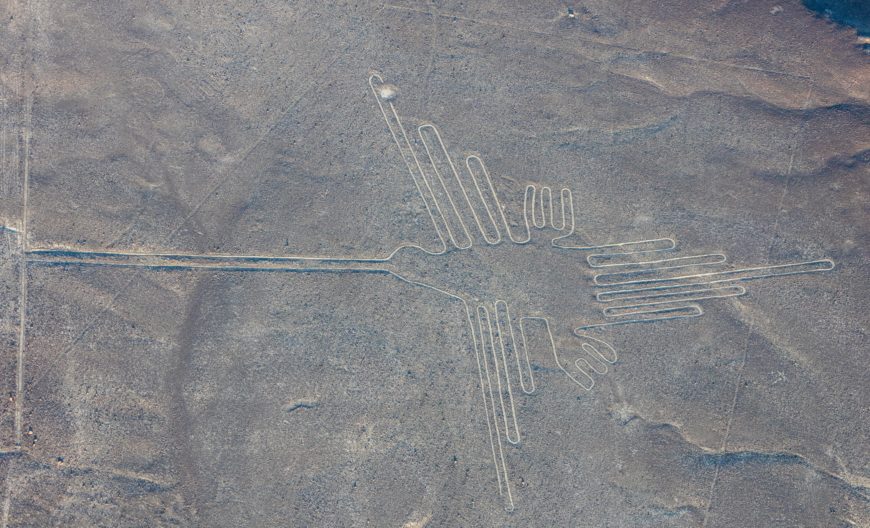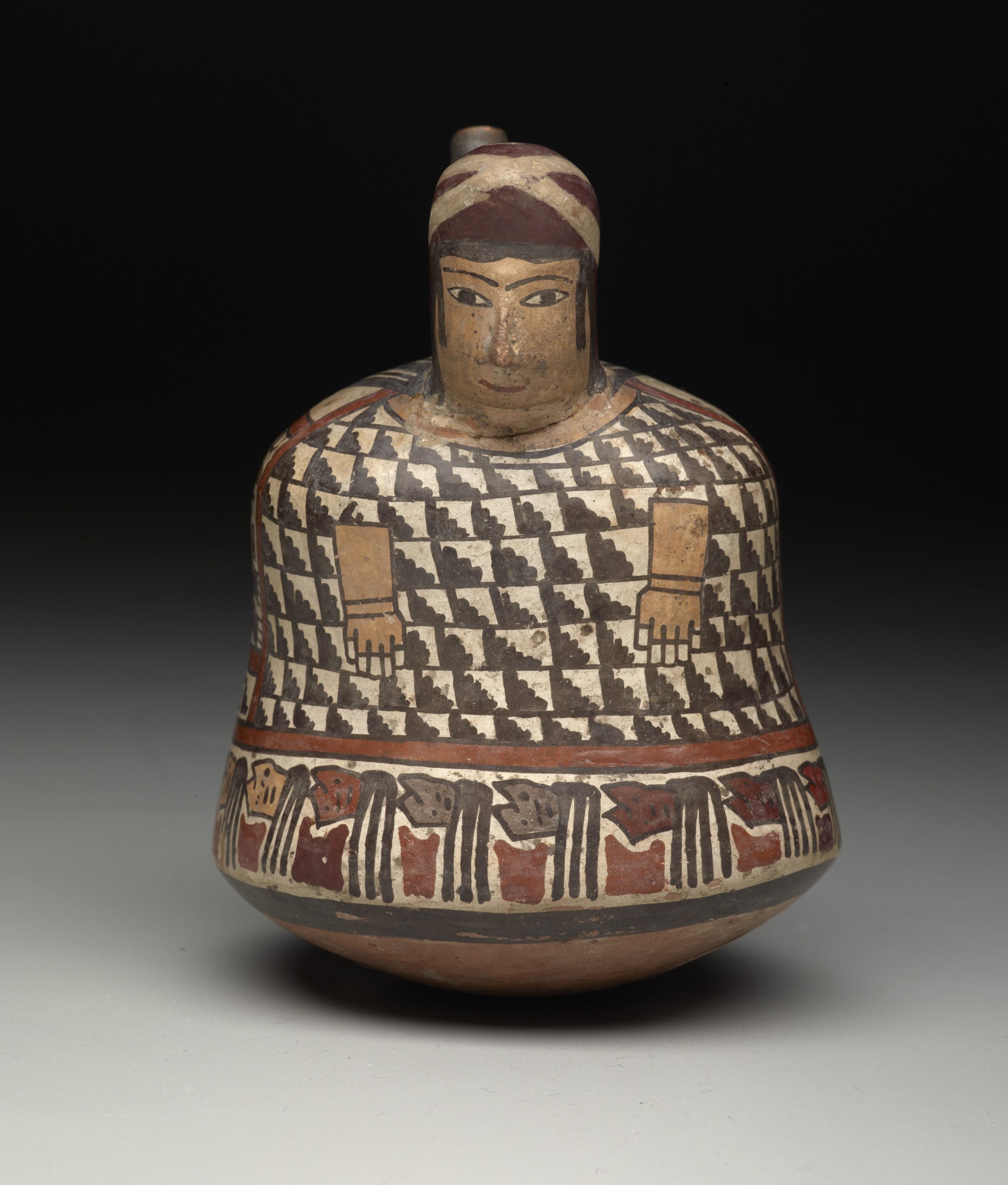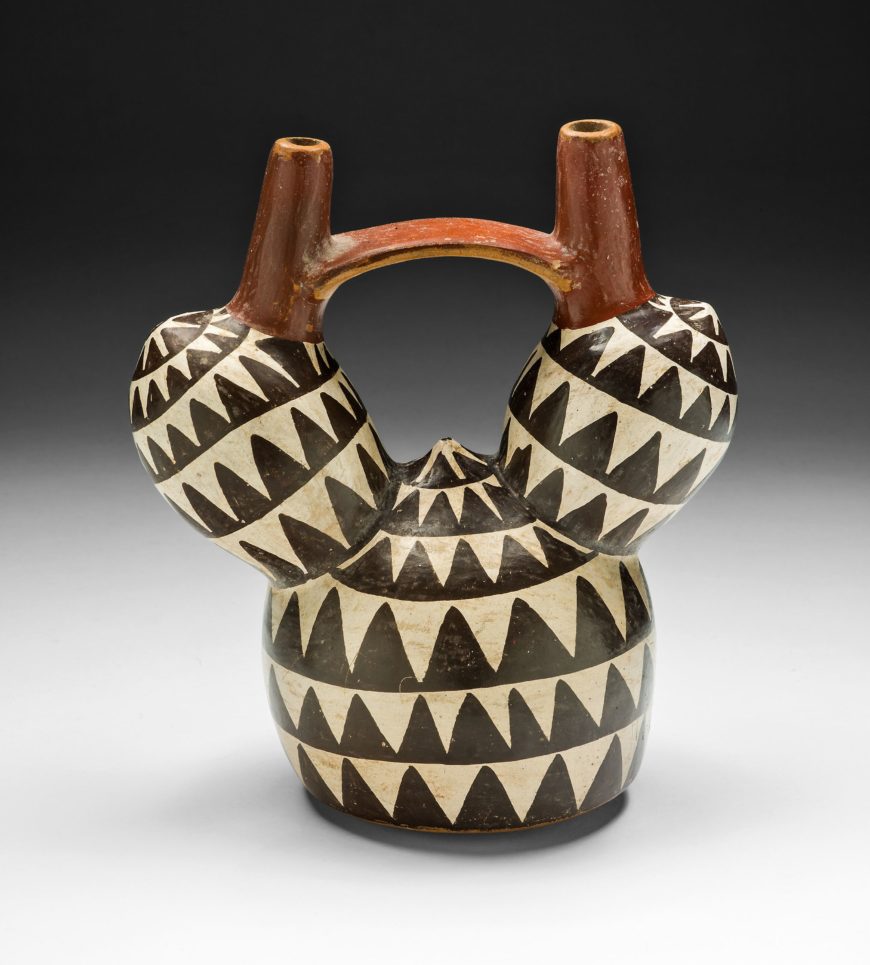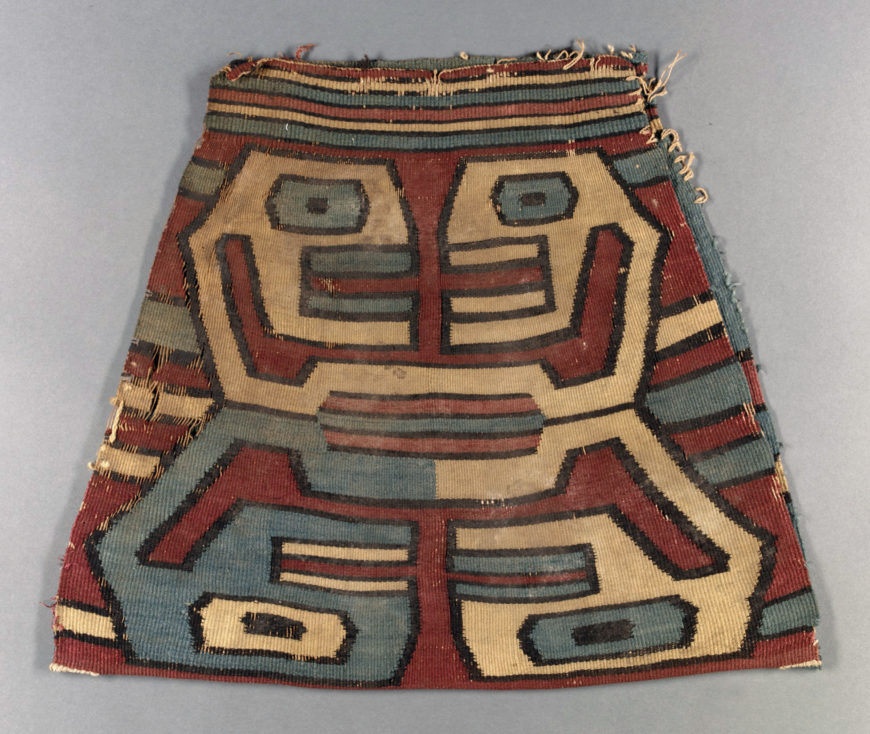The Nasca (also spelled Nazca) civilization flourished from 100–800 C.E. in the Nasca Desert of Peru’s south coast, located about 200 miles south of Paracas. The Nasca lived in dispersed settlements along the Nasca River, and the site of Cahuachi served as their main ritual and pilgrimage center. The flat desert terrain proved to be a favorable canvas for Nasca artists, which they utilized to create artworks of unprecedented grandeur, size, and sophistication.

Geometric Nasca lines (photo: Diego Delso, CC BY-SA 4.0)
The Nasca Lines
The Nasca Lines are geoglyphs consisting of lines and representational images etched onto the desert floor. The lines cannot be viewed in their entirety from the ground, and are best seen either from the surrounding foothills or by plane. The Nasca Lines have garnered the attention of archaeologists, art historians, explorers, journalists, and artists, inspiring a slew of interpretations over the course of nearly a century.

Nasca line monkey (photo: Diego Delso, CC BY-SA 4.0)
While scholars remain divided on the precise meaning of the lines, all can agree that they were not made by aliens, as the popular show Ancient Aliens would like people to believe. One of the most convincing interpretations put forth by archaeologist Anthony Aveni and his colleagues argues that the Nasca lines traced important underground water sources. The vast majority of the Nasca lines are just that—straight lines, which run parallel, converge, and intersect with one another. In an excessively dry desert climate that receives less than one inch of rainfall per year, access to fresh water would have been a central concern for ancient Nasca peoples.

Hummingbird Nasca line (photo: Diego Delso, CC BY-SA 4.0)
The Nasca landscape also contains a series of representational images of a monkey, whale, condor, spider, dog, heron, and others. One of the most iconic images is that of the Nasca Line Hummingbird, which features a stylized rendition of this miniscule bird, measuring over 300 feet long. The hummingbird is rendered in bird’s-eye view with outstretched wings, tail, and long characteristic beak that extends to another set of lines.
While the lines seem impossible to create without the use of modern technology, archaeologists discovered that the lines are indeed reproducible with a large labor force and a system of measurement that employs a set of strings or ropes of different lengths. One striking feature of all the figural Nasca lines is they are contour drawings—the lines never cross each other. If one traversed the lines of the hummingbird, for instance, he or she would return full circle to the starting point. This suggests that the animal figures could have each served as special pilgrimage routes. Indeed, the existence of pottery fragments and food remains along the lines indicate frequent human visitation.

Figure with Human Heads, 450-650 C.E., ceramic (Dallas Museum of Art)
Nasca ceramics

Nasca vessel in the form of an achira root, 180 B.C.E. – 500 C.E. (The Art Institute of Chicago)
Nasca ceramic art also exhibits a strong interest in bold design. The Figure with Human Heads consists of a person gendered as male, either standing or seated, with his arms at his sides. His nose is modeled in three dimensions, but the rest of his facial features are painted, and his body is rendered as the general form of the vessel. He wears a headcloth over his hair, held in place with a criss-crossed band, and a tunic that features a design consisting of black and white stepped motifs arranged into repeating squares. Beneath this pattern is a border decorated in a repeating rhythm of highly abstracted heads seen in profile. The closed eyes and loose hair indicate that they are ritual heads, associated with fertility in Nasca art. (While sometimes referred to as “trophy heads,” archaeologists have found increasing evidence that heads were curated by the Nasca as part of ancestor veneration, and that they were usually not associated with warfare). The use of the monochromatic scheme in the man’s tunic intensifies the design’s visual impact, and is similar to the pattern seen in a vessel depicting an achira (a root vegetable).

Nasca textile bag with abstract design, perhaps serpents, 7th century (The Metropolitan Museum of Art)
The Nasca were interested in issues of design and abstraction centuries before the rise of abstract art in the twentieth century. Nasca earthworks carved into the ground left an indelible mark on the coastal landscape, revealing a great deal about Nasca beliefs and aesthetic traditions. The Nasca introduced a stunning linearity to the arts of the pre-Columbian Andes, which carried through to other aspects of their artistic repertoire.





